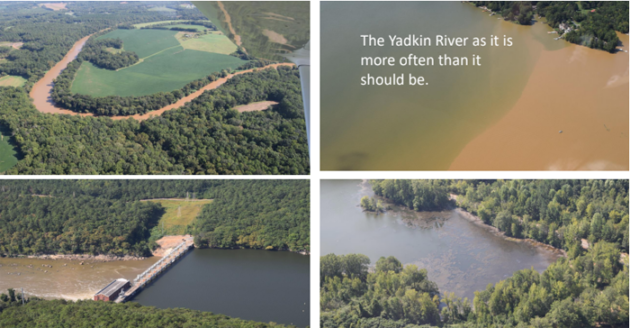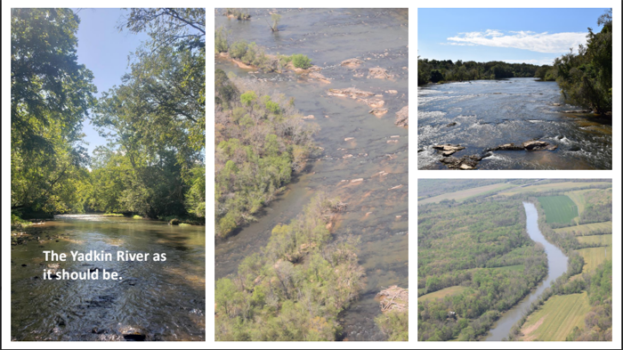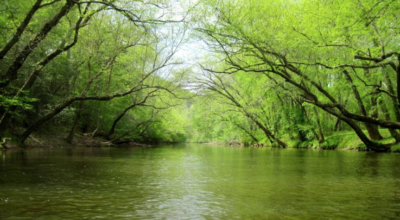Spirit of Rowan: A trip back in time: Yadkin River area is rich in ties to the past
Published 12:00 am Sunday, March 24, 2024
By Kylie Bailey
The long dirt road to meet Dr. Wayne Koontz was bumpy and winding. The view of the Yadkin adjacent to the dirt road was a disappointing spectacle of muddy water with an icy top that proved how cold it was. Little did our class know, but we had just entered an area beside the Yadkin that had a history connecting to the very founding of our country.
Koontz, who has served the Salisbury community for decades as a pediatrician, waited for our arrival at the bottom of the path. He welcomed us and explained that he had been a landowner along the Yadkin River since 1979. He then enthusiastically showed off his historic log cabin that was built in 1868, which Koontz moved along the river soon after he purchased it.
We entered the cabin and were amazed by the ongoing collection of family artifacts, which showed just how long he had lived there. There were wicker baskets made by hand, antique furniture, and heirlooms that made us feel like we were going back in time.
These items, although impressive, weren’t nearly as old or fragile as the artifacts he showed next. Koontz led us to a kitchen table, the top of which was covered with towels, concealing our view of the lumpy objects beneath. Koontz began telling our class the history of the Trading Ford area, and when he removed the towels, we got front-row seats to his personal artifact collection of arrowheads, pipes for tobacco, bowls and baskets woven by the Native Americans. Koontz explained that he found the items around the river, which were most likely left by the Sapona tribe, who lived, hunted and gathered food on the very land where his home now stood.
The Sapona, although peaceful themselves, weren’t treated the same way by neighboring tribes. Koontz explained that the Sapona eventually moved north to Virginia to escape the violence. They were an agricultural tribe and settled along the Yadkin for the resources and easy travel the river offered. Their way of life was shown in what they left behind, preserved by the soil and water of the Yadkin.
The European settlers arrived in the area in the mid-1700s, close to 40 years later. The Native Americans and European settlers most likely used the Shallow Ford to cross the river with ease. The Shallow Ford was an important part of the Yadkin because its combination of low average water level and solid rock base made it a perfect place for wagons, stagecoaches and army cannons to cross the river safely. Its geography made Shallow Ford a major trading spot and travel point.
Koontz explained that another more significant moment in the Yadkin’s history was related to Shallow Ford during the Revolutionary War. Lord Cornwallis was in pursuit of Major General Nathanael Greene and General Daniel Morgan, hoping their capture would end the conflict.
Greene and Morgan had other plans. They had fled the scene of the Battle of Cowpens, knowing Cornwallis would chase after them. General Daniel Morgan fled with more than 600 British prisoners, making a pit stop at Rutherfordton to send an express message to his commander, Major General Nathanael Greene. Greene set off on his trip to find General Morgan, stopping at Steele Tavern, where Elizabeth Steele gave him money for more equipment since Greene’s men were severely outnumbered. Once more equipment was acquired, Greene moved his troops to the Yadkin, not 2 miles from where we sat at Koontz’s cabin.
However, he soon realized the water was much too high to cross on foot. So, with the help of the people of Trading Ford, their boats, and their labor, the American troops were moved across the river. This helped Greene escape the British and Cornwallis; when Cornwallis arrived at the same crossing, the water was still too high, and all the boats were gone. Cornwallis was stuck on one side of the river while Greene and his men were safe and sound on the other side, all thanks to the river and the community. To no avail, Cornwallis fired on Greene’s men, who sat high on the other side of the river. Their artillery would not reach Greene’s men. This forced Cornwallis to travel north to Mocksville to cross the river, giving Greene a huge lead. Cannonballs from the event would be found in the area of the River more than 100 years later, showing just how much history lies under the waters.
Through learning about the river’s past, our class developed a deep appreciation for the Yadkin and was amazed to consider people drinking from a river with so much history. Conserving the river is something that people should try to do, considering the community connections it holds and the resources the Yadkin has always given us.






